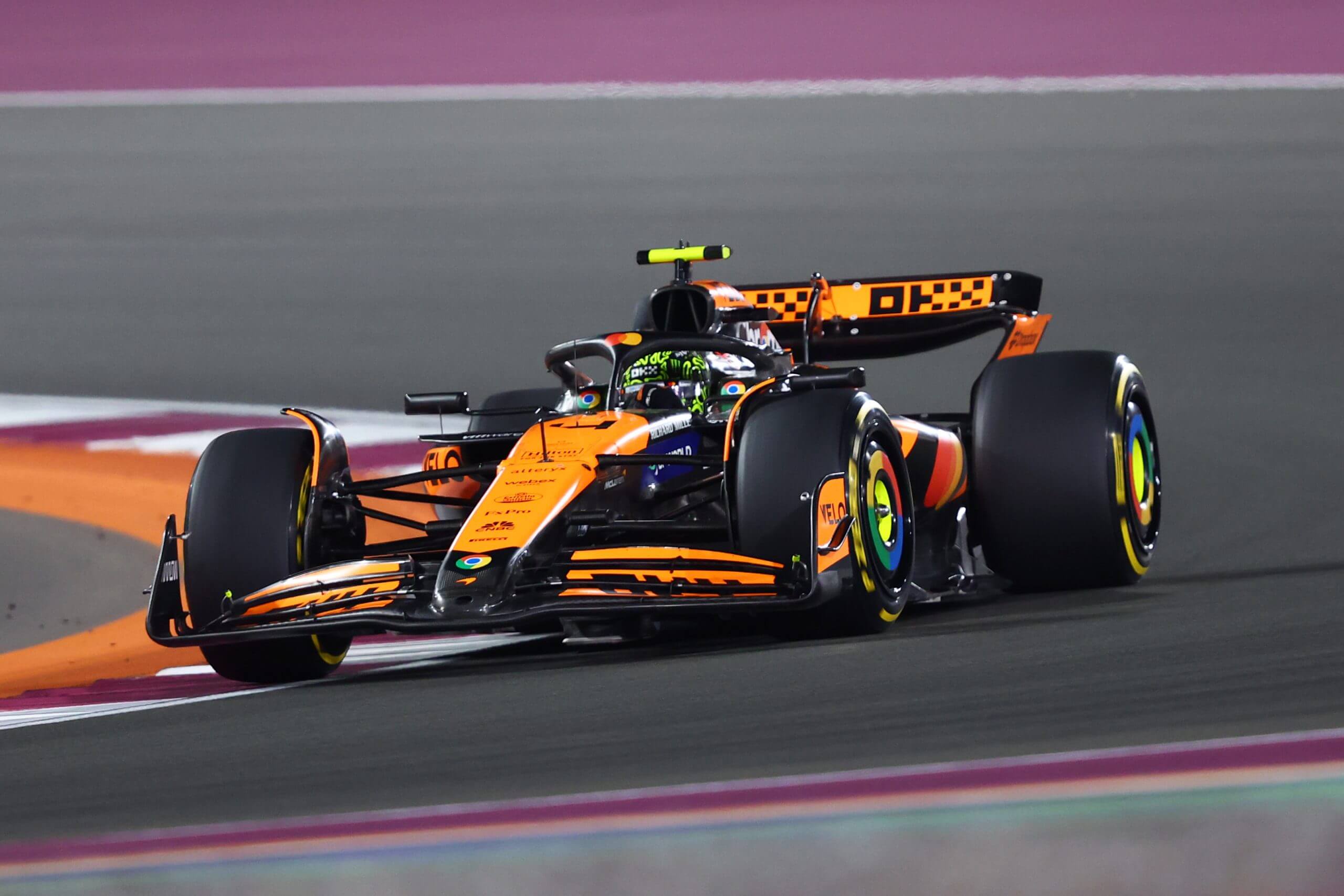The FIA has explained the reasons behind Lando Norris’ severe penalty during Sunday’s Qatar Grand Prix and the delay in deploying the safety car.
Following the penultimate race of the Formula One season at Lusail, the officiating of the race came into the spotlight after Norris was hit with one of the harshest penalties available to the stewards.
The McLaren driver, who was in contention for victory against Max Verstappen, received a 10-second stop-and-go penalty after he failed to slow for double-waved yellow flags that were shown for debris on the straight, costing him around 36 seconds in race time.
The flags were shown because a loose wing mirror from Alex Albon’s Williams sat on the right-hand side of the main straight and required recovery. But the safety car was not deployed until Valtteri Bottas had struck the mirror and strewn more debris across the track.
Post-race, McLaren team principal Andrea Stella questioned why Norris had been given such a severe penalty that dropped him from second to last place before eventually recovering to 10th, while there were also queries in the paddock as to why it had taken so long for the safety car to be deployed in response to the loose mirror.
The fresh scrutiny came amid a series of changes at the FIA in recent weeks, including the sudden exit of F1 race director Niels Wittich with three races to go in the season. His replacement, Rui Marques, was required to also be the race director for Formula Two and F1 Academy in Qatar after another FIA departure.

The FIA confirmed after the race that it would issue an explanation for the actions taken by race control, which was released on Monday.
For Norris’ penalty, the FIA said that the 10-second stop-and-go was “in accordance with the penalty guidelines circulated to teams on Feb. 19 2024,” and that a double-waved yellow infringement “is considered a serious compromise of safety, which is why such offenses carry such a severe penalty.”
Norris admitted after the race that he failed to lift through the section of the track and apologized to McLaren, but Stella noted there had been indecision from race control over the yellow flags shown in that section.
Regarding the time taken to deploy the safety car, the FIA said that “normal practice is for the safety car not to be deployed if there is a small amount of debris, and off the racing line.” A number of drivers said after the race that they did not even see the loose wing mirror.
Once the mirror had been hit and resulted in “extensive debris,” potentially contributing to the punctures for Carlos Sainz and Lewis Hamilton, the FIA said it “forced the decision on a safety car.”
Apparently a Virtual Safety Car “would not have been a solution, as the cars remain spread-out and there is not sufficient time for a marshal to clear the debris.” The cars were also required to come through the pit lane while it was cleared due to the amount of debris.
“The FIA constantly reviews its methods and processes and will analyze further the specific scenario, and discuss it with the teams, in order to see whether in the future a different course of action needs to be taken,” the explainer said.
The FIA also addressed the malfunction of the safety car lights during the second safety car period. Norris was vocal about the safety car lights failing to go out for the restart, and required reassurance on the radio from his engineer that the race was about to resume.
The FIA said that “all teams were verbally advised that the safety car would be coming in, so the restart took place in the normal fashion.” As a precaution, the safety car was then swapped ahead of its third deployment following the stoppages for Sergio Pérez and Nico Hulkenberg.
Marques was overseeing his second grand prix as F1 race director after taking over from Wittich for Las Vegas, and also ran the F2 and F1 Academy races in a workload that was previously deemed too much for one person. This came after the sudden exit of Janette Tan, who had been due to take over from Marques on F2 duties following his move into the F1 role.
F1’s drivers have also recently called out the FIA president, Mohammed Ben Sulayem, for his clampdown on swearing and asked for greater transparency from the governing body, having not been informed of Wittich’s sudden exit.
Responding to the drivers in an interview with Autosport in Qatar, Ben Sulayem said that the way he ran the FIA was “none of their business.”
(Top photo: Joe Portlock/Getty Images)





